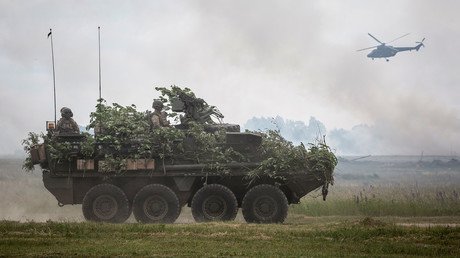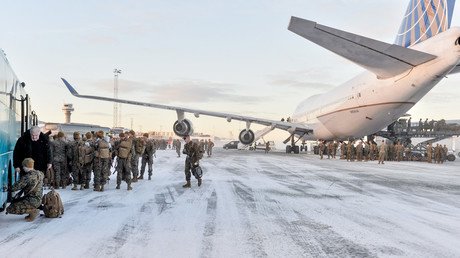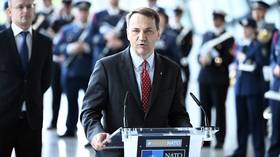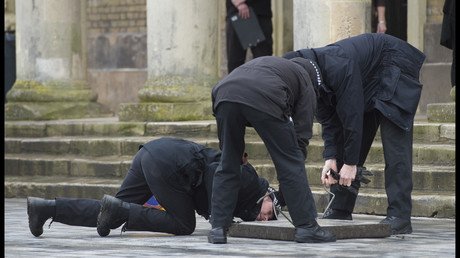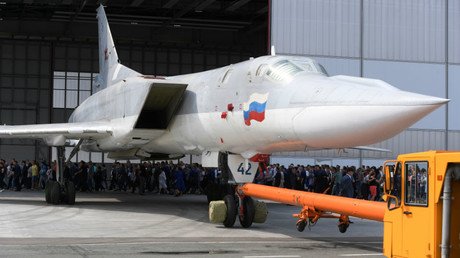NATO training Latvian military to quell 'civilian unrest' during largest drills in decades
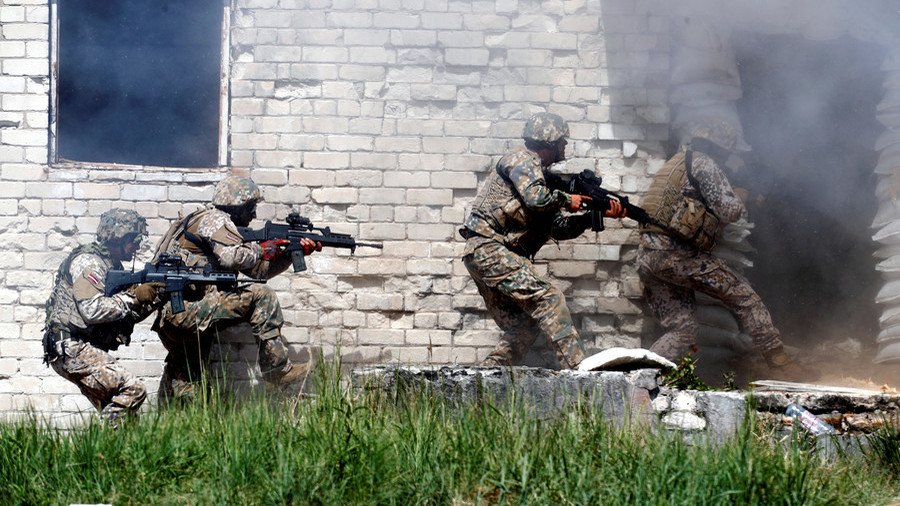
NATO has launched the biggest war games ever staged on the territory of Latvia since the Baltic state gained independence. The drills are scheduled to include the military tackling “spontaneous” unrest in Russian-populated towns.
“After four years of intensive preparations, this will be the largest military training exercise since the restoration of Latvia’s independence in which we will be test the armed forces’ readiness to defend Latvia from any threats,” said the Latvian Chief of Defense, Lieutenant General Leonids Kalnins. “This exercise is the opportunity to train not only the National Armed Forces but also Latvia’s overall defense capabilities as our partners are involved in the drills as well,” he added.
https://t.co/frzXxs6xGb: Militārajās mācībās “Namejs 2018” pārbaudīs Nacionālo bruņoto spēku gatavību valsts aizsardzības uzdevumu izpildei: https://t.co/0bKrEV5BJM#namejs2018#Latvijasarmija#Zemessardze#karavīri#zemessargi#soldiers#nationalguards#eFPLatvia#WeAreNatopic.twitter.com/JpzDepJEwk
— NBS (@Latvijas_armija) August 13, 2018
The two-week drills began on Monday, and are scheduled to end on September 2.
Apart from the Latvian Armed Forces, National Guard, law enforcement and volunteers, the drills would also involve troops from more than a dozen of other NATO states, including the US, Canada, Spain, Italy and Poland as well as other Baltic States. The total number of troops participating in the drills amounts to 10,000, local media reported.
Polish 🇵🇱 troops from the 17th Mechanized Brigade @CyfrowaBrygada have arrived to Latvia 🇱🇻 in order to take part in the exercise #Namejs2018, the largest military drill ever organized in Latvia. #WeAreNATO📸 https://t.co/0VOcDB8x79pic.twitter.com/Lf5wIxvXvS
— Cezary Stachniak (@cezarysta) August 20, 2018
The active phase of the exercises will take place in 36 regions across Latvia. The military also concluded more than 500 agreements with some private citizens on the use of their land and infrastructure in the exercises. The Latvian Army has issued a promotion video on the day the drills began. The footage shows the Latvian troops performing various military tasks using modern equipment.
Šodien sākas līdz šim lielākās Nacionālo bruņoto spēku organizētās militārās mācības “Namejs 2018”. #namejs2018#mācības#karavīri#zemessargi#zemessardze#latvija#latvijasarmija#soldiers#nationalguards#eFPLatvia@AizsardzibasMin@Valsts_policija@IeM_gov_lvpic.twitter.com/6DbIQdWq53
— NBS (@Latvijas_armija) August 20, 2018
The exercises go beyond conventional military practices, however. One of the training scenarios will see troops being deployed to counter “spontaneous unrest” among the general public. Such drills are specifically scheduled to take place in the towns of Valmiera and Jekabpils – both of which, notably, have a significant percentage of ethnic Russians among their residents.
"We will not create a scenario against a particular country, but we will prepare the National Armed Forces to protect Latvia against any danger," General Kalnins said. He added that what he called Russia's hybrid operations in eastern Ukraine had been taken into account while developing the scenarios for the exercises, the Latvian Public Broadcaster LSM reported.
"In the training, we will use a NATO scenario based on the geographic conditions of the region. This scenario is flexible enough to run both conventional tactical operations and scenarios for preventing provocations in the country," Lieutenant Colonel Gunars Grikmanis, Commander of the Military Training Department of the Armed Forces Joint Staff, told the official Latvian military portal sargs.lv.
"The main challenges in the training will be related to this cooperation with other state structures – with the police and the border guard. Cooperation with state and local government institutions and the civilian population will also be essential,” Grikmanis added.
The Latvian military assured the people that live ammunition will not be used outside established military zones but still warned that the training will be very “realistic,” while calling on the locals to be “patient and understanding.”
NATO has been continuously building up its military presence near the Russian borders, under the pretext of accusing Russia of involvement into the Ukrainian crisis. NATO countries maintain that Russia invaded and “annexed” Crimea, a peninsula whose population overwhelmingly voted to rejoin Russia after the 2014 pro-NATO coup in Kiev.
According to the Russian Defense Ministry, NATO has tripled its military presence on Russia’s western borders over the past five years, forcing Moscow to respond. Russia has repeatedly warned that increased NATO presence on its doorstep effectively contributes nothing to the regional security while, on the contrary, undermining stability in Europe.
Meanwhile, the US-led bloc has also intensified military exercises in Eastern Europe. In June, more than 18,000 soldiers from 19 countries took part in the two-week ‘Saber Strike’ exercise, held in Poland and the Baltic States. The drills were said to be aimed at training the deployment of military convoys to defend NATO’s eastern flank. The US-led military bloc, however, keeps saying that the drills are not aimed at “provoking” Russia.
